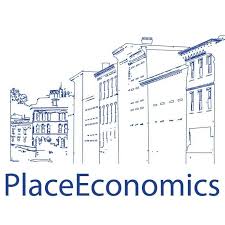A leading consulting firm in the study of preservation, revitalization, and reinvestment economics, PlaceEconomics, has just released a clear case for including historic preservation principles squarely into COVID-19 recovery efforts.
Event Recording: Del. Brooke Lierman brought Donovan Rypkema, preservation economist and author of the report being discussed in this blog, together with a panel of preservation leaders in Maryland for “Preservation as Revitalization” on Tuesday, June 16, 2020.
Preservation Maryland joins PlaceEconomics and our national partners in bringing preservation to the forefront of discussions about COVID-19 recovery efforts. Specifically, we have called on legislators and the administration in Maryland to utilize the state historic tax credit as ready-made tool for economic rebuilding.
FROM THE REPORT

As posited by PlaceEconomics in their 16-page primer, the U.S. Government has historically invested in houses during and after times of turmoil, like following the Great Depression and World War II, with the GI Bill and other initiatives. Referencing the firm’s credentials that span over 30 years and across the globe, the report states, “…from our perspective from measuring the impacts of historic preservation across the US and internationally – investment in older buildings should play a big role in the road to recovery from the economic crisis resulting from COVID-19 impacts.”
With increasing fervor of the past several years, preservationists have worked to shatter the notion that historic preservation is only for large historic sites and mansions, alone – instead, the field, collectively and state-by-state have worked to make the case that America’s historic building stock can be part of a solution to address affordable housing needs. Historic preservation can be utilized to convert existing historic structures into quality affordable housing — and address some of the shortfalls that come from new construction especially when considering the cost to municipalities that subsidize sprawl.
AFFORDABLE HOUSING
According to the National Low-Income Housing Coalition, Maryland needs 119,000 new units of affordable housing to meet existing demand. New construction will play an important role in closing this gap — but new construction alone cannot meet the need. PlaceEconomics’ report puts a fine-point on the crisis, stating that nearly one-third of all households in America spend more than 30% of their income on housing – a line drawn that indicates that those household are “burdened” by their housing bills. Historic preservation should be utilized to transform already built structures in our historic neighborhoods to address the affordable housing shortage across the County.
Preservation Maryland’s efforts toward this goal have included successfully advocating for an additional historic tax credit for projects that result in affordable housing as well as grant awards to small community groups, professional conference sessions on affordable housing, adaptive reuse – and the planned acquisition of a historic structure to be transitioned into affordable housing. If successful, this revolving fund project in Hagerstown, Maryland can be a model for affordable rehabilitations. Organizations like The 1772 Foundation and the L’Enfant Trust are breaking additional ground in this work.
HOW CAN THIS BE IMPLEMENTED?
Recommendations by PlaceEconomics that would begin to address these compounding issues in future federal COVID-19 recovery bills include the following components:
- Provide funds to local governments for investment in their older (pre-1960) housing stock,
- Adopt the Historic Homeowners Tax Credit program,
- Expand the Federal Rehabilitation Tax Credit for smaller projects, and
- Create a Job Training Program for the Rehabilitation Trades.
Preservation Maryland commends PlaceEconomics on providing this well-founded plan and would like to help connect some dots to existing programs – and maybe even inspire new programs.
As the leading voice for pro-historic preservation and pro-smart growth legislation in Annapolis and Washington, DC, Preservation Maryland led a Mid-Atlantic coalition, we helped fight back an ill-conceived plan to eliminate the federal historic tax credit. At the State House in Annapolis, our advocacy includes writing and supporting bills that fund historic preservation grant programs, small commercial tax credits, investments in parks and open spaces, and an array of bond bills that directly invest in Maryland’s historic places.
Moreover, as recovery efforts begin to take shape, as the founding member of the Maryland Heritage Recovery Task Force, Preservation Maryland’s team, including our staff, board, volunteers, and supporters, stands ready to support Maryland’s historic communities, small business owners, and museums and historic sites.

Traditional Trades Apprenticeship Program participants in Tennessee, 2019.
Moreover, Preservation Maryland could not agree more with the need for a skilled labor force and has recently become an official partner of the National Park Service’s Historic Preservation Training Center in Frederick, Maryland. Almost all of the National Park Service’s trained preservationists, like masons and carpenters, are trained in Frederick, Maryland. Through our Campaign for Historic Trades, we will make access to that training available to more Americans – so that they can go on to have well-payed jobs and historic property owners can get the right person for the job.
As detailed by PlaceEconomics and illustrated by active programs right here in Maryland, there may be a bright spot to hundreds of thousands of Americans if future stimulus bills address the needs for affordable housing and preservation maintenance incentive programs.
Our recent Recovery-Focused Work
Support Preservation Maryland Today
